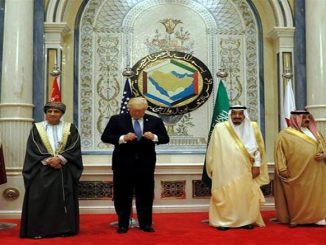
 BY: Taha Kılınç*
BY: Taha Kılınç*
It was clear that the article was trying to give the newly elected U.S. president the message that he needed to solve this old issue as soon as possible. The writer was a very well-known figure: The Libyan leader, Moammar Kadhafi.
The article in The New York Times was actually a summary of the declaration Kadhafi had previously made on the status of Palestine and Jerusalem. The plan, announced to the world by his son Saif al-Islam from London in the early 2000s, was known as the “Isratin Proposal.” The word “Isratin” was a combination of the words Israel and Palestine and the state that was proposed to be founded was planned to be made up of two nations and two religions, just like the name suggested.
The details of the “Isratin Proposal” were rather interesting: The mutual state would be named “The Holy Lands Federal Republic”. The proposal suggested that Palestine was divided up into five states, whereas Jerusalem would remain as a single state like the Vatican. According to the plan, which prescribed that all Palestinian refugees returned to their land, the protector of the Isratin State was the United Nations. Other points which were rather attention grabbing were that elections would take place straight after the state was founded, all weapons of mass destruction would be taken out and the Arab League would recognize “Isratin.”
The “Isratin Proposal” was, of course, not actualized. One of the sponsors of the deal finished his term as president and the other was beaten to death by his people. The Palestine issue and the suffering Jerusalem experiences under Israeli occupation still continues.
* * *
In 2010, Haaretz (Israel’s biggest newspaper) revealed that Israel’s Defense Ministry in 1967 (straight after the Six Day War) had negotiated to found a Palestinian State of which Nablus would be capital city. According to the draft with the signature of Rehavam Zeevi, vice president of the operations unit of the time, Israel would annex east Jerusalem and all the Palestinians living in al-Khalil and its surroundings would be made to take refuge in the new state.
The name of the aforementioned state was appropriate for the Arabs too: Ismael. In this way, the Jewish state, which was using the name of Prophet Jacob (Israel), would live side by side with the Arabs who were living under the roof of Ismael, Jacob’s uncle.
According to Rehavam Zeevi’s plan, (he was assassinated on Oct. 17, 2001 in Jerusalem while he was minister of Tourism), it was projected that the Old Jerusalem, which was inside the walls, would be a city in which people of all faiths would live together.
The 1973 Yom Kippur War and the 1st Uprising prevented the plan from being implemented. Yitzhak Rabin, the Defense minister of the time who Zeevi consulted with on the “Ismael” state and later who became prime minister, was killed by a Jewish settler in 1995, which then barred any possibilities of concessions to Palestinians.
* * *
On top of everything explained above, after Israel officially stepped into the international arena in 1948, many other plans were added in the name of solving the problems in the Middle East. These plans, of which some actually did have logical solutions, could not be actualized as the reality in the field was militarism and the struggle for land. As the focus was on who would be controlling Jerusalem, Israel did not accept anyone else sharing this concession.
When we look at the history of Jerusalem, we see that this city always changed owners through military power and guns. It is evident that Jerusalem could only be held with an energetic and ongoing military superiority. Since those who govern Israel are aware of this historical reality, they are hesitant that as soon as they choose methods other than military ones they will lose domination. It is easier for them to allow the continuation of daily lives with restrictions, to allow tourists and visitors to come and go under a loose occupation than to discuss the status of Jerusalem and find a permanent solution.
The Jerusalem issue is the underlying reason for all the problems and malfunctions in the Middle East. The Palestine issue actually consists of the Jerusalem issue too. It is not possible to fix problems in Gaza or any other place before solving the problems in Jerusalem. Within this respect, the Muslim world and Muslim politicians should think deeper on the threats Jerusalem faces.
In my next article I will discuss the problems that would be created if Donald Trump, the new U.S. president, decides to actualize his idea of moving the American embassy from Tel Aviv to Jerusalem.
*Taha Kilinç is a Turkish columnist. He writes for Yeni Şafak Turkish daily newspaper.
(Published in Yeni Şafak on Wednesday, Jan. 25, 2017)



